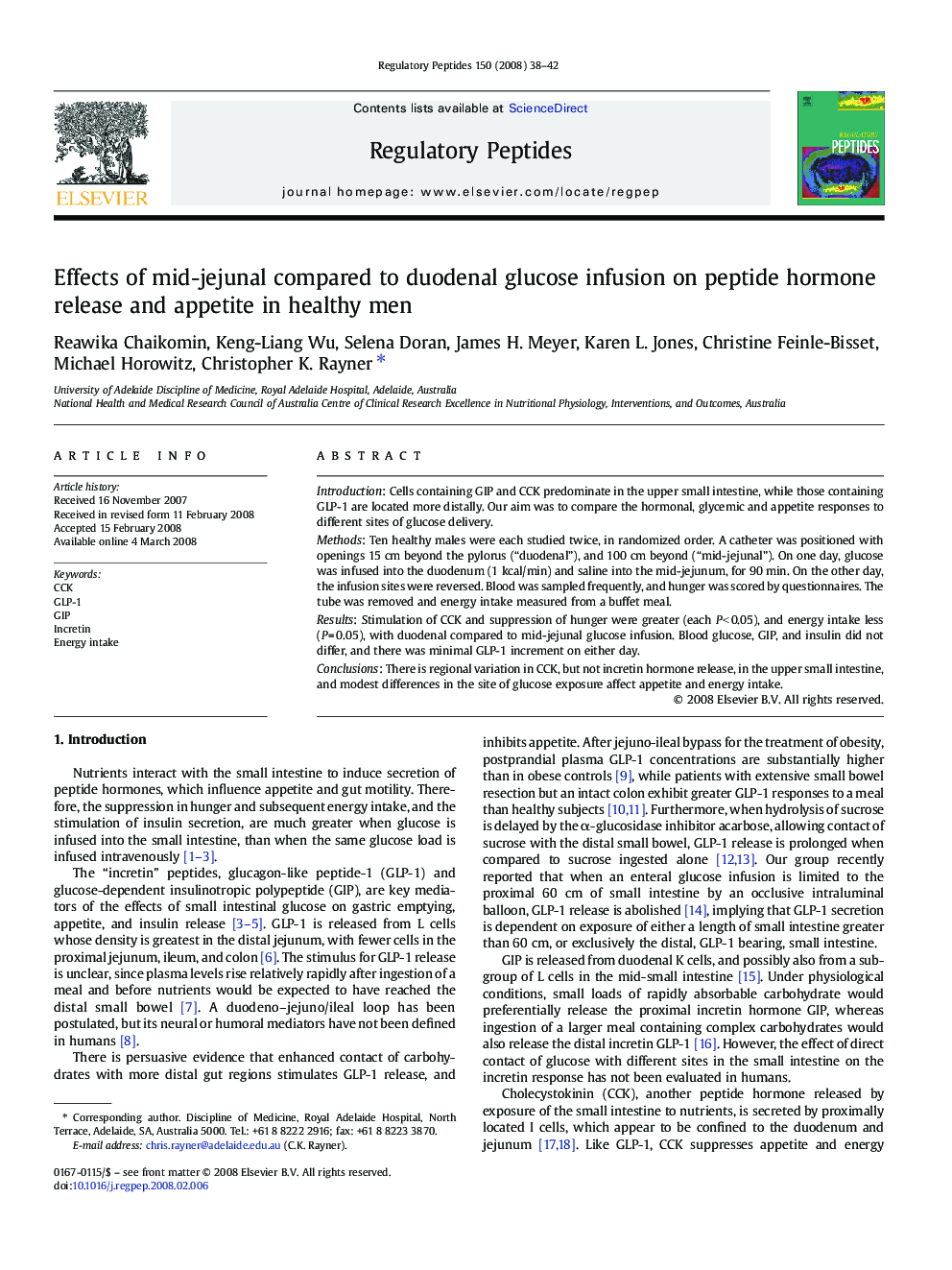| Article ID | Journal | Published Year | Pages | File Type |
|---|---|---|---|---|
| 2023117 | Regulatory Peptides | 2008 | 5 Pages |
IntroductionCells containing GIP and CCK predominate in the upper small intestine, while those containing GLP-1 are located more distally. Our aim was to compare the hormonal, glycemic and appetite responses to different sites of glucose delivery.MethodsTen healthy males were each studied twice, in randomized order. A catheter was positioned with openings 15 cm beyond the pylorus (“duodenal”), and 100 cm beyond (“mid-jejunal”). On one day, glucose was infused into the duodenum (1 kcal/min) and saline into the mid-jejunum, for 90 min. On the other day, the infusion sites were reversed. Blood was sampled frequently, and hunger was scored by questionnaires. The tube was removed and energy intake measured from a buffet meal.ResultsStimulation of CCK and suppression of hunger were greater (each P < 0.05), and energy intake less (P = 0.05), with duodenal compared to mid-jejunal glucose infusion. Blood glucose, GIP, and insulin did not differ, and there was minimal GLP-1 increment on either day.ConclusionsThere is regional variation in CCK, but not incretin hormone release, in the upper small intestine, and modest differences in the site of glucose exposure affect appetite and energy intake.
